The sport of bobsleighing has transformed dramatically over the last hundred-or-so years, becoming significantly more competitive, driving the need for faster, safer bobsleigh’s. In this blog post, we’ll be taking a look at the aerodynamic history of the bobsleigh using SOLIDWORKS Flow Simulation 2018, comparing one of the early 20th century designs to a more contemporary, streamlined design to illustrate how the flow of air has changed and how that has impacted the shape of the sled and the sport in general.
During the early part of the last century, the bobsleigh was comprised of little more than a simple framework, some basic (badly thought out!) foot rests and a steering wheel. Just take a look at the video below. Those athletes must have been extremely brave to ride in this early model!
Video: Early 20th Century bobsleigh design.
Noise Prediction in SOLIDWORKS Flow Simulation 2018
Using the new Noise Prediction tools in SOLIDWORKS Flow Simulation 2018 we now have the ability to predict the noise levels in and around the bobsleigh model. Areas of noise tend to coincide with low areas of velocity, which helps us alter the design of the model to eliminate this. Thus keeping with the original aim of a faster sled.
Here’s our early 20th Century bobsleigh that we’ve modelled in SOLIDWORKS:
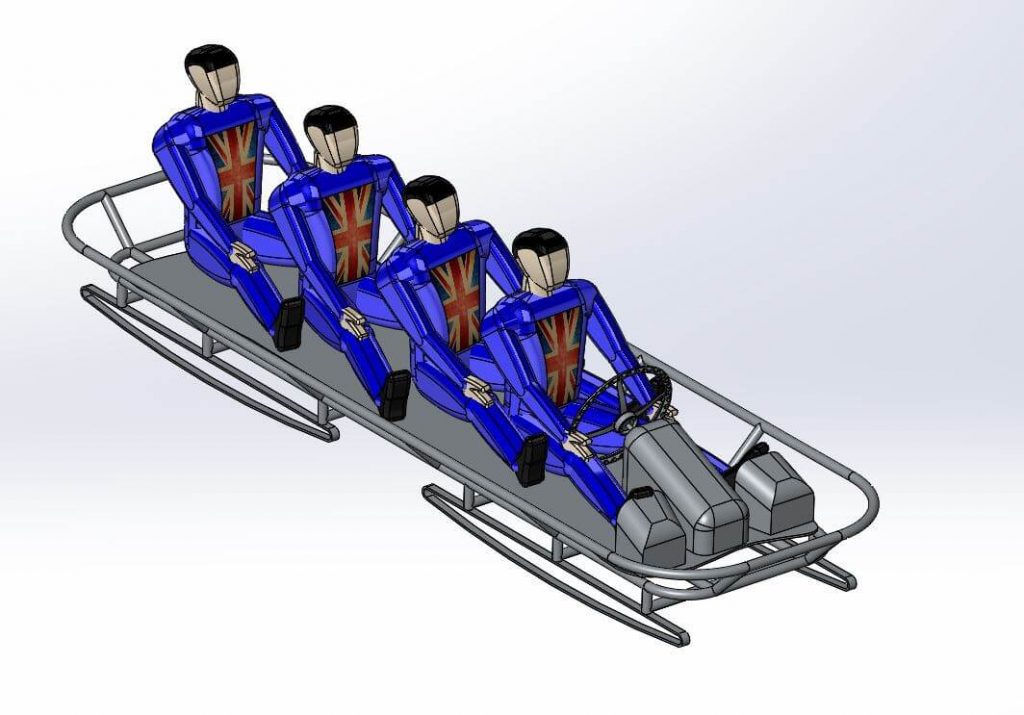
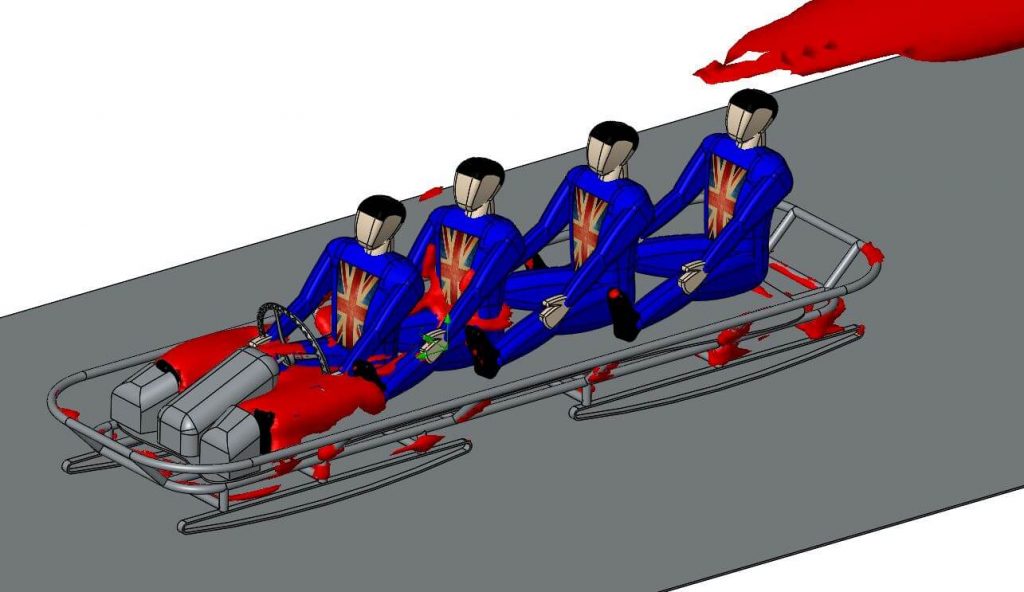
Using SOLIDWORKS Flow Simulation, we can clearly illustrate that the framework of the bobsleigh and the front persons lower body affect the flow, resulting in drag and thus less velocity. You can see the flow of velocity around the model, both with a cut plot and flow trajectories.

The above image clearly shows a significant lack in velocity between the riders and a smaller drag near the front end of the framework. Also it can be seen that a low velocity area is being formed at the front of the sleigh as the flow of air is being “pushed back” due to the design of the front of the sled.
The modern day bobsleigh
Over the last century the shape of the bobsleigh has become a lot more streamlined and enclosed. Thus the aerodynamic response of the riders is not as significant, improving streamlining and therefore velocity.
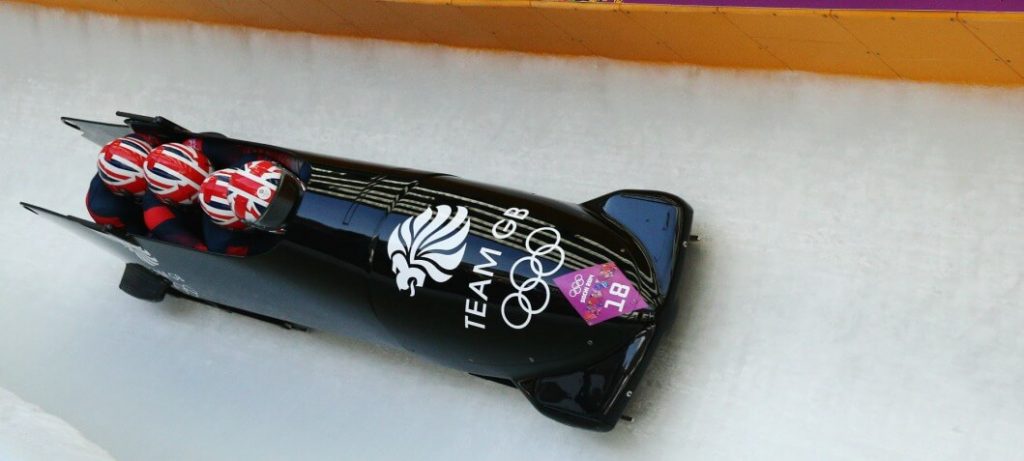
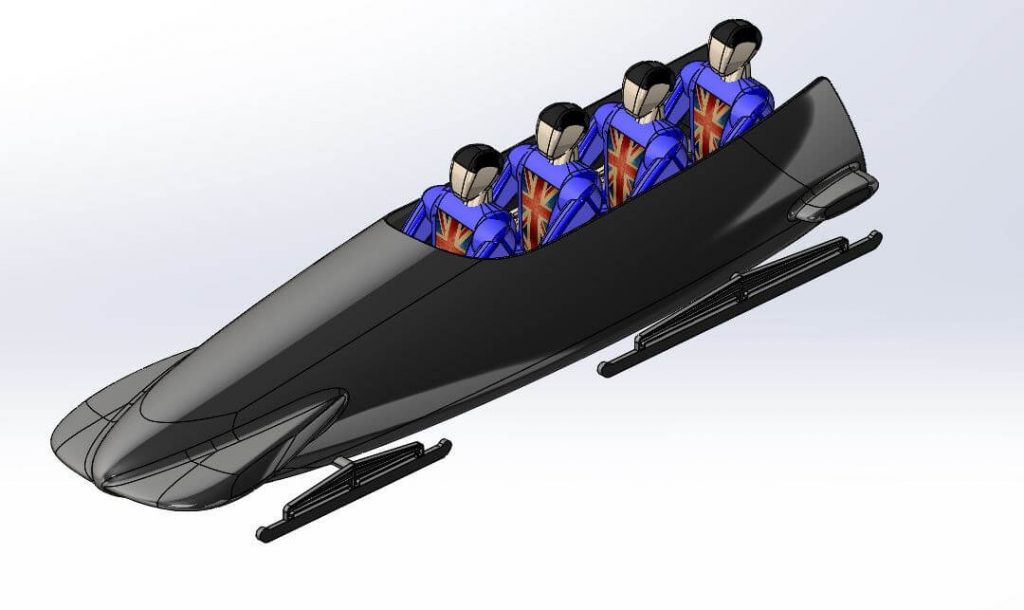
As can be seen in the image above the entire enclosed model is very aerodynamic and has no exterior framework except from the blades. This will result in a more stable, safer and faster bobsleigh. This has been proven using SOLIDWORKS Flow Simulation as before.
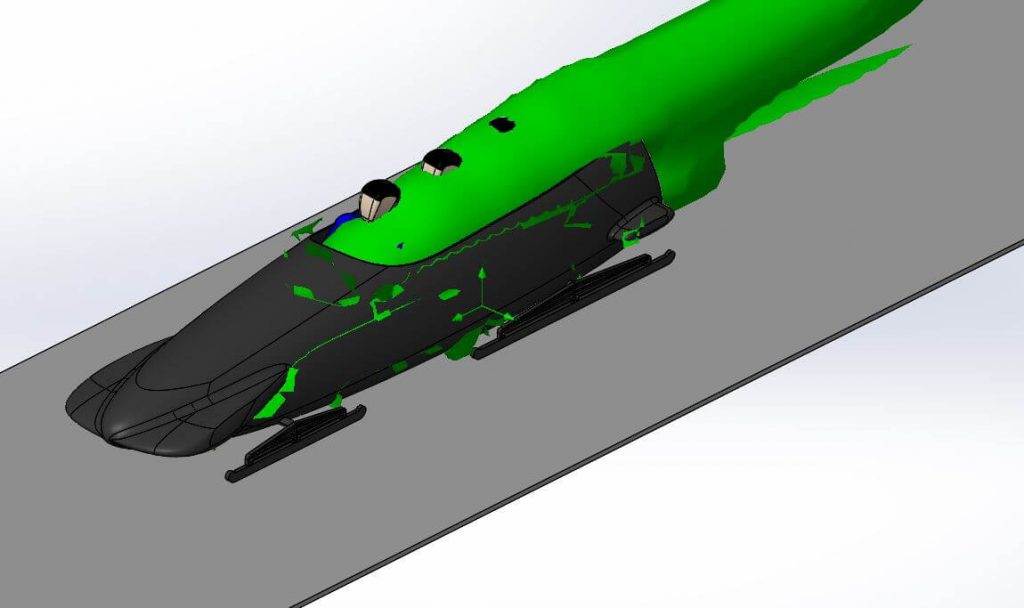

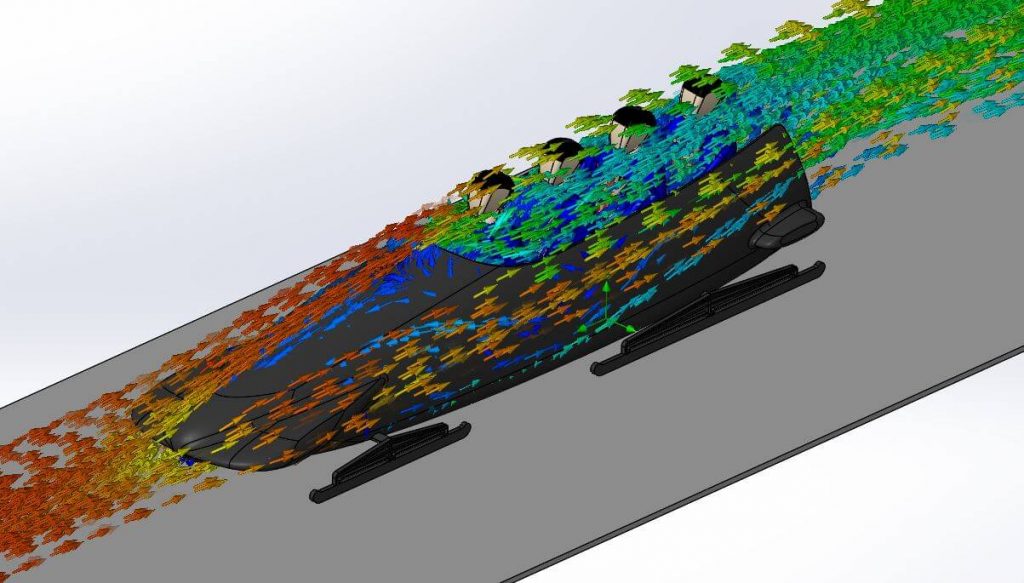
We can see that the modern bobsleigh design results in a significantly lower amount of noise outside the vehicle, in particular at the front end. Also a few additions to the design over the years have allowed for the flow to be diffused around the body rather than forced back, as was the case in the early 20th Century. The front diffuser shape, for example, allows the flow to push down on the front of the sled ensuring it doesn’t lift from the track (much like the spoiler on a car) getting some use out of the drag caused.
The noise prediction tool is a great way of comparing designs – it goes hand in hand with many parameters such as velocity or drag, and can help to determine areas of low/slow flow that need addressing with design changes.


















